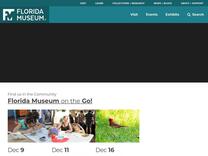Collection Policies – Paleobotany + Palynology https://www.floridamuseum.ufl.edu/paleobotany/collection-policies/
Museums generally derive their prominence from their collections, and these holdings constitute the primary difference between museums and other kinds of cultural institutions. A museum’s obligation to its collections is paramount. Each object is an integral part of a scientific composite. In or
Please remember that for a non-catalogued specimen, the field label is the only link

